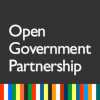Restructure active transparency tools using user-centered design to improve quality, usability, and accessibility of public information, including the availability of open format files. (BRSCS0004)
Overview
At-a-Glance
Action Plan: Action plan – Santa Catarina, Brazil, 2021 – 2022
Inception Report: Inception Report – Action plan – Santa Catarina, Brazil, 2021 – 2022
Commitment Start: Aug 2021
Commitment End: Aug 2022
Institutions involved:
- Comptroller General of the State – CGE/GEDAD
- Comptroller General of the State – CGE/AGE
- Development Agency of Santa Catarina – BADESC
- Federal University of Santa Catarina - UFSC
- Santa Catarina State University - UDESC
- Social Observatory
- Open Knowledge Brasil
- Civil Police
- Santa Catarina Special Education Foundation
- Politeia Research Group
- State Audit Court - TCE-SC
- SC Computer and Automation Center - CIASC
Primary Policy Area:
Primary Sector:
OGP Value:
- Technology and Innovation for Transparency and Accountability
Inception Report Summary
Verifiable: Yes
Relevance to OGP Values: Yes
The commitment is a continuation of ongoing practice in line with existing legislation, policies or requirements.
The commitment activities is a positive change to a process, practice or policy but will not generate a binding or institutionalized change across government or specific institution(s).
To view the detailed final assessment of this commitment read the End of Commitment Report
Description
Commitment ID
BRSCS0004
Commitment Title
Restructure active transparency tools using user-centered design to improve quality, usability, and accessibility of public information, including the availability of open format files.
Problem
The active transparency tools basically provide financial and budgetary information. At same time, these tools should be an access point to information about the transparency of the bodies and entities of the Executive Branch.
It is noteworthy that the amount of available information is increasing, and the computational resources grow exponentially, so the needs to improve technical and functional aspects of the Transparency Portals become evident.
Among the main problems, the following might be highlighted: lack of bidirectional communication channels with all kinds of users; little or no involvement and commitment of other bodies and entities of the executive branch; lack of important information to citizens: lack of clarity, overly technical vocabulary and usability problems.
The main challenges are to adopt an easier vocabulary and to organize the information so that the citizen can access, understand and use it to perform social control.
Status quo
The transparency portals on average have 400 thousand accesses per year. These Portals gather information on Government revenue and expenditure, allowing citizens and organized civil society to monitor in detail the tax collection and the application of public resources. In the current year, the most accessed pages from the Transparency Portals are the remuneration of public servants, revenues, expenses, and the State Government Payment Card.
On the other hand, the Open Data Portal counted for a total of 125 thousand accesses in 2020 and also proved to be very useful during the pandemic. Information on COVID-19 was the most required, with emphasis on state decrees, ordinances and laws regarding the fight against the pandemic, as well as the number of cases. Currently, the Open Data Portal makes available 102 datasets from 25 public agencies.
Action
The commitment seeks to improve active transparency enhancing the quality and accessibility of information, and restructuring tools and functionalities to facilitate social control. It is expected that the portals no longer focus only on legal requirements, they should also present relevant, easily accessible, and understandable information. Efficient communication channels between government and society and data presentation in a dynamic, intelligent, and interactive way also are expected. The commitment involves modifications in the information architecture to make the researches more intuitive and organic, improvement and optimization of the current search options aiming personalized queries according to the interest of the user, improvement of the data quality, insertion of new data and information, opening up of new bidirectional communication channels, and provision of more data in open file format.
How will the commitment contribute to solving the public problem described above?
The implementation of this commitment will considerably strengthen active transparency, since the Portals will be more accessible and understandable to all citizens, with this there will be an increase in the qualification and social control of government plans, programs and actions, obtained mainly from:
The implementation of this commitment will considerably strengthen the active transparency, considering that the Portals will have better accessibility and will be more comprehensible to all citizens. That way, increasing the social control over the government programs, and actions. The main aspects are:
- greater clarity for the citizen;
- greater citizen interaction;
- the permanent evaluation of the Portal; and
- Greater participation of other bodies and agencies of the State Executive Branch.
The commitment aims to move towards a model focused on the user’s experience and needs, that provides information with quality and appropriate format, allowing its best use.
What long-term goal as identified in your Open Government Strategy does this commitment relate to?
The commitment is directly related to innovation in transparency, an important value of open government, as it enables the control of society in public administration matters, helping to improve the quality of government expenditure and the prevention of corruption.
Primary Policy Area
Right to Information
Primary Sector
Public Services (general)
What OGP value is this commitment relevant to?
| Technology and Innovation for Transparency and Accountability | The commitment seeks to improve active transparency to facilitate social control through the restructuring of technological tools to expand and improve the information quality.The commitment seeks to improve active transparency to facilitate social control through the restructuring of technological tools to expand and improve the information quality. |
